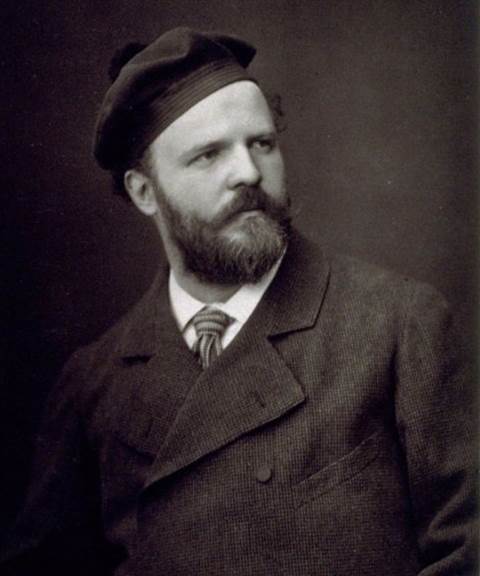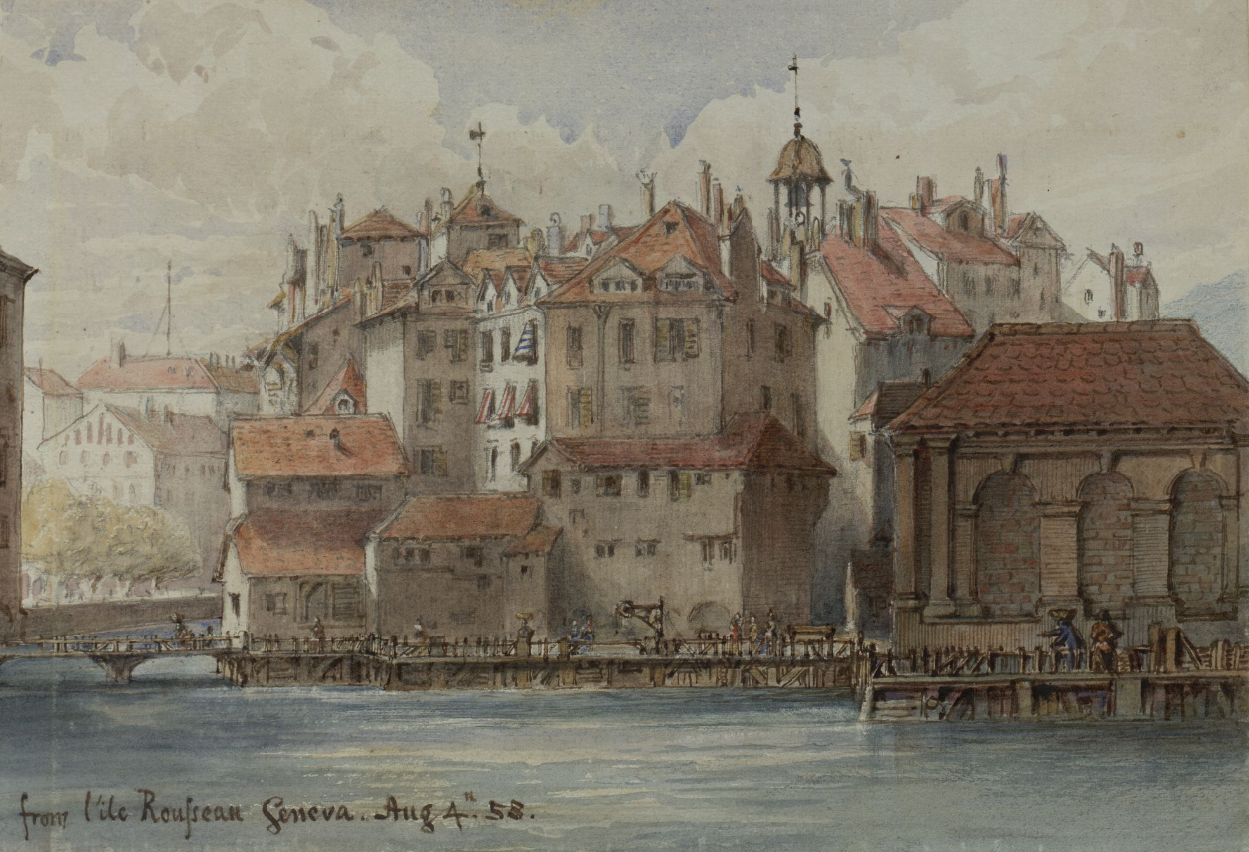|
Albert Savarus
''Albert Savarus'' is an 1842 novel by French novelist and playwright Honoré de Balzac (1799–1850) and included in his series of novels (or ''Roman-fleuve'') known as ''La Comédie humaine'' (''The Human Comedy'') which parodies and depicts French society in the period of the Restoration and the July Monarchy (1815–1848). Plot summary Rosalie is the only daughter of the Wattevilles, a distinguished family of Besançon. Her father is very timid and spends his time working on a lathe, while her mother is quite proud and domineering. Her mother is trying to encourage Rosalie to take an interest in M. de Soulas, who is a young fop. At a dinner party, the Abbe reports the spectacular success of a lawyer Savaron, who has settled quietly in the town. Rosalie takes an interest in the lawyer, who is good-looking, and gets her father to build a gazebo in the garden with the secret intent of being able to watch Savaron. Savaron is successful in several cases, and it becomes known that ... [...More Info...] [...Related Items...] OR: [Wikipedia] [Google] [Baidu] |
Oreste Cortazzo
Oreste Cortazzo (26 April 1836, Rome–1910, Paris) was an Italian-born French painter, graphic artist and illustrator. Biography His family originally came from Ceraso, in the Province of Salerno. Around 1848, he began an apprenticeship with his father, Michele (c.1808-1865), who was also a painter and a great admirer of Titian. (Some of Michele's works may be seen at the Palace of Caserta, near Naples.) In 1858, he met Léon Bonnat, who was studying in Rome. When Bonnat returned to Paris in 1860, Cortazzo decided to go with him; to take lessons and work in his studio. Having had a conservative education, he struggled to choose sides in the dispute between the Academics and the Impressionists. He initially earned his living doing portraits for a largely bourgeois clientele and producing genre scenes on commission for Goupil & Cie. [...More Info...] [...Related Items...] OR: [Wikipedia] [Google] [Baidu] |
Gazebo
A gazebo is a pavilion structure, sometimes octagonal or turret-shaped, often built in a park, garden or spacious public area. Some are used on occasions as bandstands. Etymology The etymology given by Oxford Dictionaries is "Mid 18th century: perhaps humorously from gaze, in imitation of Latin future tenses ending in -ebo: compare with lavabo." L. L. Bacon put forward a derivation from '' Casbah'', a Muslim quarter around the citadel in Algiers.Bacon, Leonard Lee. "Gazebos and Alambras", ''American Notes and Queries'' 8:6 (1970): 87–87 W. Sayers proposed Hispano-Arabic ''qushaybah'', in a poem by Cordoban poet Ibn Quzman (d. 1160).William Sayers, ''Eastern prospects: Kiosks, belvederes, gazebos''. Neophilologus 87: 299–305, 200/ref> The word ''gazebo'' appears in a mid-18th century English book by the architects John and William Halfpenny: ''Rural Architecture in the Chinese Taste''. There Plate 55, "Elevation of a Chinese Gazebo", shows "a Chinese Tower or Ga ... [...More Info...] [...Related Items...] OR: [Wikipedia] [Google] [Baidu] |
1842 French Novels
__NOTOC__ Year 184 (Roman numerals, CLXXXIV) was a leap year starting on Wednesday (link will display the full calendar) of the Julian calendar. At the time, it was known as the Year of the Consulship of Eggius and Aelianus (or, less frequently, year 937 ''Ab urbe condita''). The denomination 184 for this year has been used since the early medieval period, when the Anno Domini calendar era became the prevalent method in Europe for naming years. Events By place China * The Yellow Turban Rebellion and Liang Province Rebellion break out in China. * The Disasters of the Partisan Prohibitions ends. * Zhang Jue leads the peasant revolt against Emperor Emperor Ling of Han, Ling of Han of the Han dynasty#Eastern Han, Eastern Han Dynasty. Heading for the capital of Luoyang, his massive and undisciplined army (360,000 men), burns and destroys government offices and outposts. * June – Ling of Han places his brother-in-law, He Jin, in command of the imperial army and sends them ... [...More Info...] [...Related Items...] OR: [Wikipedia] [Google] [Baidu] |
Books Of La Comédie Humaine
A book is a medium for recording information in the form of writing or images, typically composed of many pages (made of papyrus, parchment, vellum, or paper) bound together and protected by a cover. The technical term for this physical arrangement is ''codex'' (plural, ''codices''). In the history of hand-held physical supports for extended written compositions or records, the codex replaces its predecessor, the scroll. A single sheet in a codex is a leaf and each side of a leaf is a page. As an intellectual object, a book is prototypically a composition of such great length that it takes a considerable investment of time to compose and still considered as an investment of time to read. In a restricted sense, a book is a self-sufficient section or part of a longer composition, a usage reflecting that, in antiquity, long works had to be written on several scrolls and each scroll had to be identified by the book it contained. Each part of Aristotle's ''Physics'' is called a b ... [...More Info...] [...Related Items...] OR: [Wikipedia] [Google] [Baidu] |
Carnegie Mellon University
Carnegie Mellon University (CMU) is a private research university in Pittsburgh, Pennsylvania. One of its predecessors was established in 1900 by Andrew Carnegie as the Carnegie Technical Schools; it became the Carnegie Institute of Technology in 1912 and began granting four-year degrees in the same year. In 1967, the Carnegie Institute of Technology merged with the Mellon Institute of Industrial Research, founded in 1913 by Andrew Mellon and Richard B. Mellon and formerly a part of the University of Pittsburgh. Carnegie Mellon University has operated as a single institution since the merger. The university consists of seven colleges and independent schools: The College of Engineering, College of Fine Arts, Dietrich College of Humanities and Social Sciences, Mellon College of Science, Tepper School of Business, Heinz College of Information Systems and Public Policy, and the School of Computer Science. The university has its main campus located 5 miles (8 km) from D ... [...More Info...] [...Related Items...] OR: [Wikipedia] [Google] [Baidu] |
Loire
The Loire (, also ; ; oc, Léger, ; la, Liger) is the longest river in France and the 171st longest in the world. With a length of , it drains , more than a fifth of France's land, while its average discharge is only half that of the Rhône. It rises in the southeastern quarter of the French Massif Central in the Cévennes range (in the department of Ardèche) at near Mont Gerbier de Jonc; it flows north through Nevers to Orléans, then west through Tours and Nantes until it reaches the Bay of Biscay (Atlantic Ocean) at Saint-Nazaire. Its main tributaries include the rivers Nièvre, Maine and the Erdre on its right bank, and the rivers Allier, Cher, Indre, Vienne, and the Sèvre Nantaise on the left bank. The Loire gives its name to six departments: Loire, Haute-Loire, Loire-Atlantique, Indre-et-Loire, Maine-et-Loire, and Saône-et-Loire. The lower-central swathe of its valley straddling the Pays de la Loire and Centre-Val de Loire regions was added t ... [...More Info...] [...Related Items...] OR: [Wikipedia] [Google] [Baidu] |
Steamboat
A steamboat is a boat that is propelled primarily by steam power, typically driving propellers or paddlewheels. Steamboats sometimes use the prefix designation SS, S.S. or S/S (for 'Screw Steamer') or PS (for 'Paddle Steamer'); however, these designations are most often used for steamships. The term ''steamboat'' is used to refer to smaller, insular, steam-powered boats working on lakes and rivers, particularly riverboats. As using steam became more reliable, steam power became applied to larger, ocean-going vessels. Background Limitations of the Newcomen steam engine Early steamboat designs used Newcomen steam engines. These engines were large, heavy, and produced little power, which resulted in an unfavorable power-to-weight ratio. The Newcomen engine also produced a reciprocating or rocking motion because it was designed for pumping. The piston stroke was caused by a water jet in the steam-filled cylinder, which condensed the steam, creating a vacuum, which in turn caus ... [...More Info...] [...Related Items...] OR: [Wikipedia] [Google] [Baidu] |
Monastery
A monastery is a building or complex of buildings comprising the domestic quarters and workplaces of monastics, monks or nuns, whether living in communities or alone ( hermits). A monastery generally includes a place reserved for prayer which may be a chapel, church, or temple, and may also serve as an oratory, or in the case of communities anything from a single building housing only one senior and two or three junior monks or nuns, to vast complexes and estates housing tens or hundreds. A monastery complex typically comprises a number of buildings which include a church, dormitory, cloister, refectory, library, balneary and infirmary, and outlying granges. Depending on the location, the monastic order and the occupation of its inhabitants, the complex may also include a wide range of buildings that facilitate self-sufficiency and service to the community. These may include a hospice, a school, and a range of agricultural and manufacturing buildings such as a barn, a ... [...More Info...] [...Related Items...] OR: [Wikipedia] [Google] [Baidu] |
Geneva
Geneva ( ; french: Genève ) frp, Genèva ; german: link=no, Genf ; it, Ginevra ; rm, Genevra is the second-most populous city in Switzerland (after Zürich) and the most populous city of Romandy, the French-speaking part of Switzerland. Situated in the south west of the country, where the Rhône exits Lake Geneva, it is the capital of the Republic and Canton of Geneva. The city of Geneva () had a population 201,818 in 2019 (Jan. estimate) within its small municipal territory of , but the Canton of Geneva (the city and its closest Swiss suburbs and exurbs) had a population of 499,480 (Jan. 2019 estimate) over , and together with the suburbs and exurbs located in the canton of Vaud and in the French departments of Ain and Haute-Savoie the cross-border Geneva metropolitan area as officially defined by Eurostat, which extends over ,As of 2020, the Eurostat-defined Functional Urban Area of Geneva was made up of 93 Swiss communes and 158 French communesFederal Statistical O ... [...More Info...] [...Related Items...] OR: [Wikipedia] [Google] [Baidu] |
Switzerland
; rm, citad federala, links=no). Swiss law does not designate a ''capital'' as such, but the federal parliament and government are installed in Bern, while other federal institutions, such as the federal courts, are in other cities (Bellinzona, Lausanne, Lucerne, Neuchâtel, St. Gallen a.o.). , coordinates = , largest_city = Zurich , official_languages = , englishmotto = "One for all, all for one" , religion_year = 2022 , religion_ref = , religion = , demonym = , german: link=no, Schweizer/Schweizerin, french: link=no, Suisse/Suissesse, it, svizzero/svizzera or , rm, Svizzer/Svizra , government_type = Federal assembly-independent directorial republic , leader_title1 = Federal Council , leader_name1 = , leader_title2 = , leader_name2 = Viktor Rossi , legislature = Federal Assembly , upper_house = Counci ... [...More Info...] [...Related Items...] OR: [Wikipedia] [Google] [Baidu] |
Lathe
A lathe () is a machine tool that rotates a workpiece about an axis of rotation to perform various operations such as cutting, sanding, knurling, drilling, deformation, facing, and turning, with tools that are applied to the workpiece to create an object with symmetry about that axis. Lathes are used in woodturning, metalworking, metal spinning, thermal spraying, parts reclamation, and glass-working. Lathes can be used to shape pottery, the best-known design being the Potter's wheel. Most suitably equipped metalworking lathes can also be used to produce most solids of revolution, plane surfaces and screw threads or helices. Ornamental lathes can produce three-dimensional solids of incredible complexity. The workpiece is usually held in place by either one or two ''centers'', at least one of which can typically be moved horizontally to accommodate varying workpiece lengths. Other work-holding methods include clamping the work about the axis of rotation using a chuck or ... [...More Info...] [...Related Items...] OR: [Wikipedia] [Google] [Baidu] |






